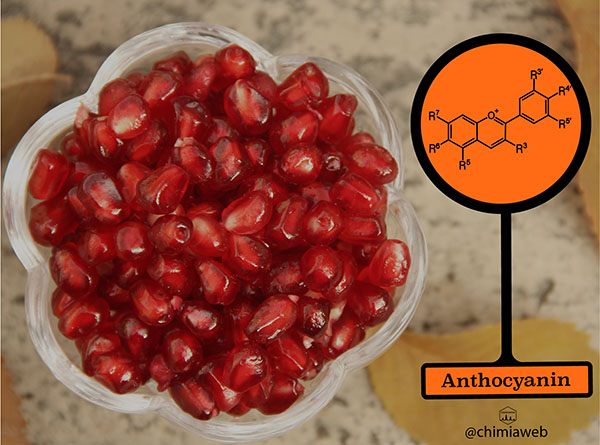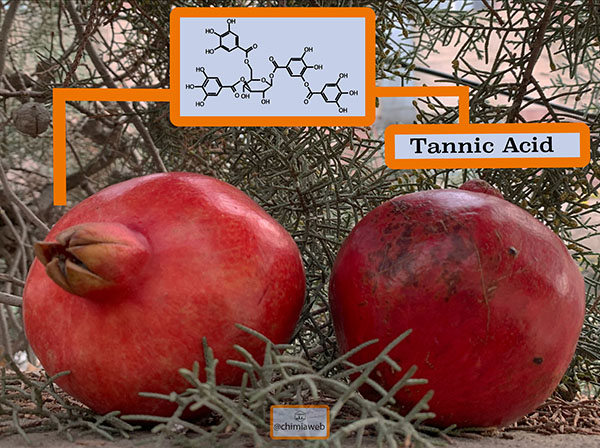Pomegranate is a delicious widely used fruit. This fruit is considered native to Iran and its neighboring countries, where it was considered heavenly fruit and served in festivals like Yalda night. Pomegranate was then cultivated over the whole Mediterranean region of Asia, Africa and Europe.
All parts of this fruit are rich in nutritional chemical compounds. The chemical composition of the fruit differs depending on several circumstances, such as growing region, climate and maturity. Here is a look at the main chemical components of pomegranate.
Pomegranate Juice
Pomegranate juice is a good source of total sugars, mainly fructose and glucose. It also contains organic acids, such as ascorbic acid, citric acid, fumaric acid and malic acid. Pomegranate is abundant in phenolic compounds. Among several classes of polyphenols, tannins and flavonoids are the main groups. Major classes of pomegranate flavonoids include anthocyanins, flavan 3-ols, and flavonols. The red color of pomegranate is due to the presence of anthocyanins.

Pomegranate Seed
Pomegranate seed is the richest source of the rare and unique pomegranate seed oil. The oil is mainly composed of fatty acids. The major fatty acid found in Pomegranate seed oil is punicic acid. Punicic acid is an isomer of conjugated linolenic acid and an omega-5 polyunsaturated fatty acid. This fatty acid is named after its principle source pomegranate (Punica granatum L.). It is most abundantly present in pomegranate seed oil compared to other sources.
Pomegranate Peel
Pomegranate peel has gained wide attention for its nutritional characteristics, due to the presence of phenolic compounds (flavonoids, phenolic acids and tannins). Pomegranate peel has also been used as a dye by carpet makers since ancient time. The major coloring compound in pomegranate peel is tannins. Tannins are water soluble polyphenolic compounds, which can form complexes with proteins and metal ions. So they bond with different types of fibers, and then the dye is fixed by using metal salts (Fe, Cu, Cr or Al).

Health Benefits
Various studies have reported that this fruit has advantageous health benefits for the human body. Phenolic compounds, together with flavonoids, anthocyanins, and tannins, are the main group of antioxidant chemicals. These compounds are important due to their biological and free radical scavenging activities. Also, punicic acid, like other unsaturated fatty acids, is an effective compound to improve human health. It shows several potential health benefits, such as cholesterol lowering, antidiabetic, anti-inflammatory, and anticarcinogenic properties.
Therapeutic Properties of Pomegranate
Extracts of all parts of the pomegranate fruit show therapeutic functions and target a wide range of diseases, including cancer, cardiovascular disorders, diabetes, Alzheimer’s disease and aging. Researchers believe that pomegranate extensive therapeutic benefits are referred to its antioxidant, anti-carcinogenic, and anti-inflammatory properties.

